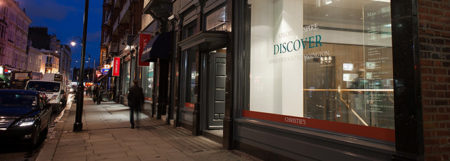
Christie’s South Ken- of (mixed) blessed memory
Not surprising, there’s been a fair old bit of weeping and gnashing of teeth about the demise of Christie’s South Kensington. A lot has been written in the art and antiques trade press about the displacement of all the staff there, too, but what’s missed, though, is Christie’s wide ranging effort to trim things back, with, as I’ve noticed, a few people I’ve got to know in New York now it appears looking for work. Wide ranging, indeed, with even the quarterly Christie’s house organ now printed on newsprint, and reduced in size to something akin to the monthly news papers still produced in a few high schools.
All this is I suppose sad, but what most people have forgotten is that Christie’s, and Sotheby’s for that matter, got large and staff heavy really in the last twenty or so years. For most of their history- and I’d say for about 200 years of it- these venerable houses performed their traditional role of selling the movables of a number of deceased estates, and those fallen on hard times. Indeed, the real glory years in the auction business were ironically in the teeth of generally hard times, after the imposition of ruinous death duties following and in an attempt to pay for the Great War- with noble houses shorn of so many of their heirs aristocratic families had not much choice, or in their grief much desire, come to it, to resist the advance of a Labour government looking for whatever revenue sources it could find. The auction house’s gaveling out lock, stock, barrel, and suites of Chippendale furniture were at the time and for decades after the usual course of their business.
With a stratospheric move upmarket particularly in the 1980’s and 1990’s following on from enormously successful sales of Impressionist pictures to a burgeoning Japanese market, we all of us quickly grew to expect that Christie’s and Sotheby’s would forever have theirs stars in the ascendant with commissions earned on 7, 8, or even 9 figure art market consignments.
What became apparent to all of us, though, in the wake of the price fixing scandal that landed Christie’s and Sotheby’s in the soup- and a couple of their senior execs in jail- was how competitive and thinly profitable the business actually is. Indeed, it was this move to market and revenue expansion that prompted the change at Christie’s South Ken from its traditional role as a venue for stock primarily available to the trade, to a retail venue that competed very directly with the trade. The specialist sales with specific collecting categories- furniture, paintings, Orientalia- were eclipsed by so-called interiors sales, a grab bag of all manner of material that sought to appeal to younger X generation types moving into homes who could then obtain furnishings, art work and bibelot all in one location.
Certainly the London and continental trade felt the effect of the change at Christie’s South Ken very keenly- a huge and seemingly unlimited budget for marketing functionally scooped the turnover marrow out of a large section of the trade, and this, coupled with exorbitantly rising rents in the best art and antiques venues, has reduced what was a healthy business into a crippled shadow of its former self.
Consequently, while I’ve enjoyed browsing Christie’s South Ken for donkey’s years, its imminent closure has caused me to shed tears more of the crocodile variety. It will be interesting to watch to see if the trade particularly in London, so badly injured in the last two decades, might sans Christie’s be impacted positively. In my further opinion, it would be surprising if even this shot in the revenue arm will do what survives of the trade so badly maimed as its been any appreciable good.
